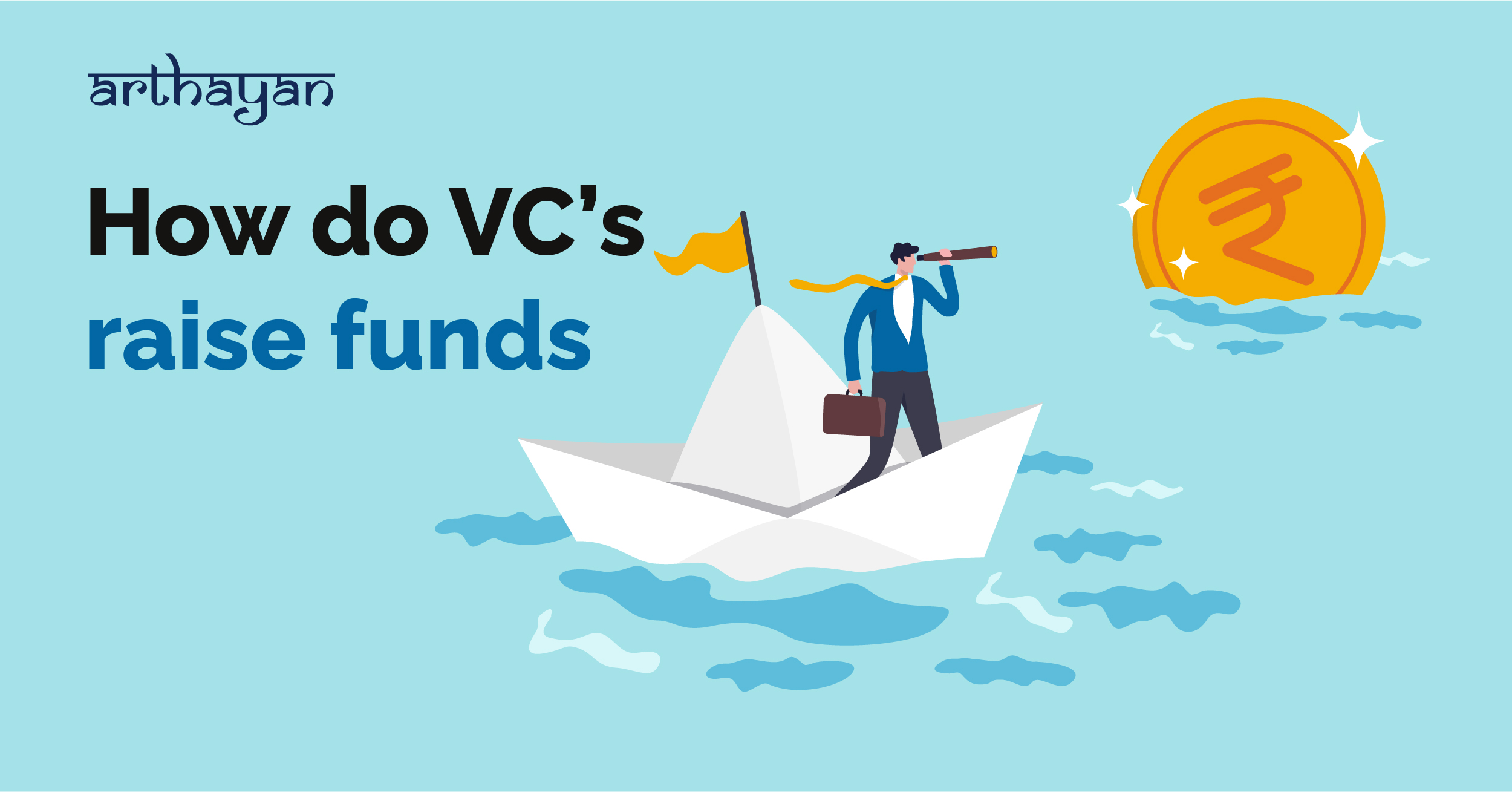Startup investors are well known to provide the capital and managerial skills for budding entrepreneurs.
But have you thought about how do VCs themselves get the money to invest in these Startups?
Let us understand the process through which the VC firm goes through to raise capital.
What is a VC fund?
A VC fund is an investment vehicle managed by a VC firm. The Investment managers of the fund are known as the General Partners, or the GPs. The money they manage is invested by the Limited Partners or the LPs.
The capital in the VC ecosystem usually comes from large institutions like pension funds, endowments of universities and hospitals, charitable foundations, insurance companies, wealthy family offices, and corporations, high net worth individuals.
To understand VC Capital, let’s look into the various types of institutions (LPs) that typically invest in a VC fund.
1. Pension funds:-
Pension funds are entities that pay entities a fixed pension amount to the retired employees of a particular organization. These pension funds typically long investment cycle and therefore they invest a portion of their contribution in high-risk assets such as a VC fund in order to earn a substantial return.
2. Endowments:-
Endowments are funds established by hospitals, universities, and other non-profits to invest in the long term. Income generated by their investments help fund the operations of those organizations.
3. Family Offices:-
Wealthy family offices are one of the oldest investors in VC funds. Till today wealthy family offices consist of a major percentage of VCs capital.
4. Insurance Companies:-
Life insurance companies typically have a long time horizon and a typically large pool of assets which in turn encourages them to invest in risky asset classes (eg Alternate Investments, Hege funds, VC funds).
5. Corporations :-
Corporations generally invest in VC funds for a dual purpose: to generate a return on the company’s cash while also gaining insight on the new start-ups and technology that might be of strategic interest to the corporation.
The General Partner uses an Offering Memorandum to raise funds of a given size. If the GP is successful, they will sign the Limited Partnership Agreement which lays down details for managing the VC investment.
This fundraising process can take almost a year or even more in some cases. After the GP has convinced investors to invest in the fund there is the first close of the fund, during which a percentage of the committed capital is called upon from the LP, the remaining balance is called upon as required.
VC's make money in two ways-
Management fees on the total capital committed by the Limited Partners and a carried interest on the fund's return.
Management fees – A venture fund is a pool of capital invested by insurance companies, high-net-worth individuals, endowment funds, etc. When a venture fund raises capital, it charges the Limited Partners a fee for having investors invest and manage investment in startups.
Usually, venture funds will charge their investors 2% per annum of the total fund value.
For example, in a $100 million fund, the venture firm will earn $2 million per year as management fees. ($100 million * 2%).
Management fee becomes more important to venture investors when the venture firm manages multiple funds simultaneously. Venture firms usually try to raise a new fund every 2 to 3 years with a lifespan of a fund being 7 – 10 years.
The other side of making money is the carried interest, which is a percentage of the profits. This is normally anywhere between 20-25%. This means if a fund's size is $100 million, venture investors earn $0.2 on every dollar earned over $100 million. So if a venture firm can produce a return of $200 million on their $100 million funds, they will earn $20million in carried interest ($200 million - $100 million * 20%).
Now to continue the cycle of investment the VCs need to have a portfolio of companies that are acquired or will be acquired through an IPO/ acquisition where investors can sell their stake.
Most of the Venture Capital funds are limited partnerships with a pre-defined life, usually between eight to ten years. If a venture capital wants to remain active in the business, he or she must periodically raise funds.
Venture Capital Returns:
Investors in a VC fund profit if the returns from successful startups outweigh the losses from failed startups.
Since startups are a risky asset class and nine out of ten usually never make it till the 5th year. Therefore, VC funds typically invest in a portfolio of companies, assuming some will fail in the long run. VCs usually go for those companies which can give them a minimum of 10X return potential to recoup the loss of investment in other startups.
Fund Managers can choose to liquidate all or part of a fund to pull the capital out and distribute profits to the investors.
Amongst the many distinct venture fund strategies, the most critical ones followed by the VCs are adding value, better sourcing, and Investing in growth.
Adding Value-
Improving portfolio company operations from recruitment, marketing, operations, sales, etc. Most often VCs provide coaching to the founders. Adding value is a real strategy because it makes the investments increase their returns.
Sourcing-
Picking the right investment is the real deal because it rescales the distribution. One of the best approaches towards better sourcing is to build a good network. This takes much work to do but has attractive returns.
Investing in growth-
Investing in growth increases the frequency in the upper tail of the outcomes. Picking better is a function of research and development, and an in-depth approach towards R&D can help predict major technology and economic trends.
These three strategies will not look the same for different funds but they will be equally important!
